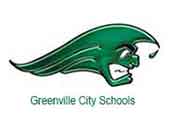|

 |
Tentative K-12 Funding for 2019 Ohio budget
By Jenna Jurosic, Treasurer
Greenville City School District
In Ohio we operate on biennial budgets (one that lasts for two years),
with the next budget starting in July. School funding from the state is
a large part of the biennial budget. Funding Ohio’s schools has long
been criticized and even ruled unconstitutional in the DeRolph case.
The importance of providing a quality education to our youth is of
utmost importance, so funding this education is a concern for our
community and political leaders throughout the state. Opinions on the
best way to fund our public schools has led to decades of changes to
state funding models, and it appears that we will, once again,
experience some change to our state funding formula with the next state
budget.
The current state funding model, which is usually described as complex,
starts with base funding per pupil of $6,020 and then adjusts this
amount using a formula to determine the portion of this each district
gets per pupil. The adjustment is determined by the State Share Index
of each district, which is measured by property valuation and the
income of the residents of the district. The index is a sliding scale
from 5% to 90%, with the wealthiest districts having an index of 5% and
the least wealthy districts having and index of 90%. Caps and
guarantees further complicate the index, meaning no district gets the
full $6,020 in base funding, but rather some portion of that amount per
student. In fact, because of caps and guarantees, very few districts
are being funded by the actual formula amount.
With the change in Governor, as we have with Governor DeWine, we
typically see a change in the funding model for schools. In his initial
budget released in mid-March, Governor DeWine proposed that each K-12
district receive the same funding as the year before plus additional
funding for mental health services, wraparound supports, mentoring,
after school programs and other services. The additional funds are on a
sliding scale, based on poverty level. For fiscal year 2020 the funding
is up to $250 per student and for 2021 up to $300 per student. Under
the Governor’s proposed budget, it is anticipated that Greenville would
receive the full funding for these services, thus increasing our state
funding by an estimated $619,987 in 2020 and $743,984 in 2021.
While the Governor has his proposed budget, the final budget will not
be fully established until late June. The budget has to go through the
House and Senate first and will likely be modified a number of times.
Currently in the House, Representatives Patterson and Cupp have a
proposal to change school funding. The Cupp-Patterson model takes into
account actual enrollment at the school, as well as property and income
levels in the district. While some districts projections under this
model are very favorable, for Greenville this model just gives us
similar funding to the current formula. The model sets out to be more
fair, and it would pump even more money into K-12 schools than the
Governor’s plan, $1.1 billion over two years compared to $500 million
with Governor DeWine’s plan. However, based on enrollment, poverty,
income and property tax values for Greenville City Schools, using this
method results in the district falling into a small group that
experiences very little change to state funding levels.
At this time, we have to wait to see which model or combinations of
ideas will end up funding our schools for the next two years.
Written by Treasurer Jenna Jurosic, Greenville City Schools
|
|
|
|

